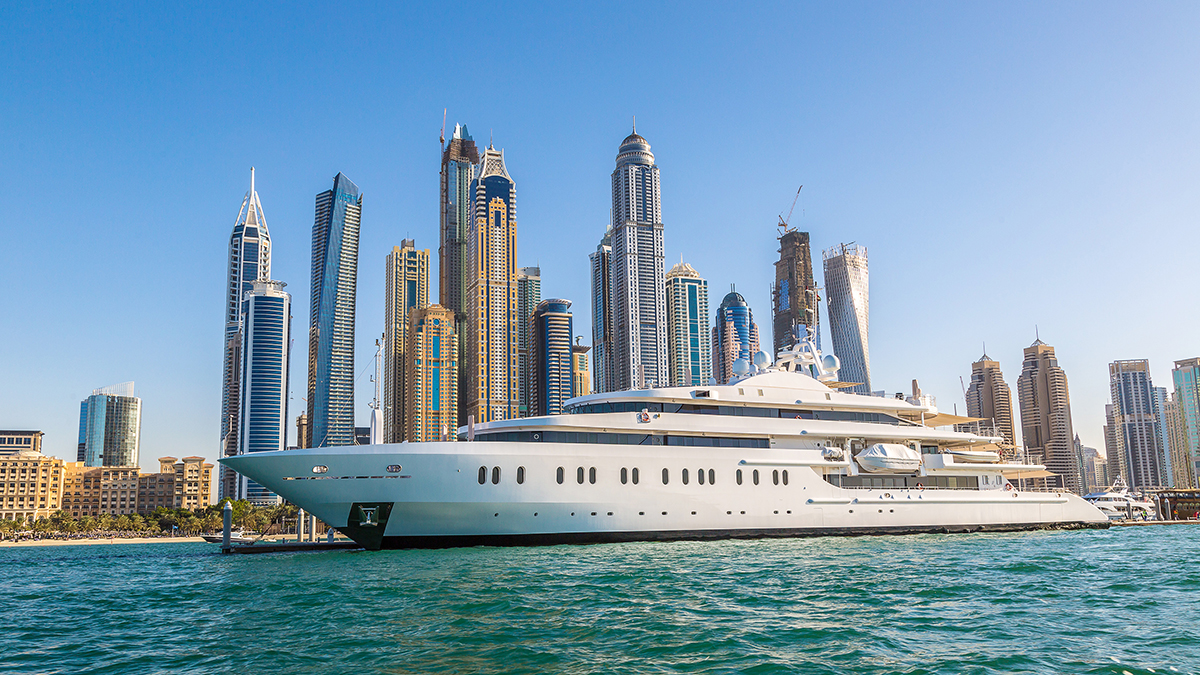Market expansion is the true test of a luxury travel brand’s resilience, creativity, and staying power in the field of tourism. For founders, CMOs, and general managers who have refined their offering in one region, the prospect of breaking into a new market, whether it’s the affluent circles of Shanghai, the gold-plated world of Gulf elites, or the incredibly competitive U.S. landscape, represents both the temptation of exponential growth and the lurking threat of misstep. Everything you know, every assumption validated by years of local dominance, suddenly has to be re-examined.
Experience shows that tactics which delivered roaring success at home can lose their magic on unfamiliar terrain. New geographies upend everything: buyer expectations, preferred channels, and the nuanced cultural cues, including those related to tourism, that govern what inspires, what reassures, and what closes a sale. The cost of getting it wrong can be daunting, both in wasted budget and intangible brand dilution.
Why Most Market Expansions Falter
The most common pitfall is the tendency to treat all wealthy prospects the same. A British bespoke travel label might land in New York expecting cultural kinship, only to find that local buyers prioritize values, imagery, and touchpoints differently. Or a safari operator that wowed German audiences might find little resonance with the preferences of Middle Eastern HNWIs, whose travel behaviors are deeply shaped by tradition, status, and seasonality.
A few missteps that often trip up even sophisticated brands:
- Messaging and visuals that feel out of touch or “foreign” in a new context
- Ad budget scattered across platforms no one influential is actually using
- CRM automations that ignore time zone, language, or local currency quirks
- Offers built for one segment that don’t translate to another’s definition of luxury
- Over-generalization of buyer personas: “They’re all affluent, surely they’ll get it!”
Recognizing these hazards is the first step. Carefully steering clear of them, however, is another matter.

When the Right Travel Advertising Agency Support Becomes Essential
Certain moves make expert support not just helpful, but necessary. Consider just a few scenarios:
1. Targeting Chinese HNWIs: Chinese high-net-worth travelers expect digital fluency, an overt display of brand prestige, and native-language communication, preferably through channels like WeChat, Weibo, and Xiaohongshu (RED). Direct translation falls flat; the right agency crafts entirely fresh narratives aligned with local culture.
2. Entering the U.S. with a Boutique Brand or Safari Offering: The American audience responds to emotional stories, but values authenticity and social proof over grandiosity. Influencer partnerships, user-generated content, and platform choice (think Meta, Google, TikTok, and even LinkedIn for certain segments) are critical for traction.
3. Pivoting from Premium to Ultra-Luxury: Moving upmarket means shifting the entire funnel: invitations must become more exclusive, visuals more aspirational, and messaging more relationship-driven. The buyer’s journey lengthens and demands individual attention at each stage.
4. Transitioning from B2B/Referral to B2C: A business that thrived on word-of-mouth or corporate bookings can struggle to break into direct-to-consumer luxury without robust targeting and tailored content for new digital channels.
These transformations are high-stakes. Getting the advertising stack right — from precise targeting to culturally fluent copy — can spell the difference between spectacular ROI and costly silence.
What a Specialized Travel Advertising Agency Brings
Hiring a travel advertising agency with expertise in luxury market expansion isn’t about “outsourcing marketing.” It’s a strategic choice that brings insider insight, hard-won data, and creative adaptation across multiple fronts.
Here’s a closer look at how the right agency excels in tourism and destination marketing to accelerate safe, profitable entry into new markets:
Deep Market Research and Persona Development Effective campaigns begin with understanding what truly matters to your new audience. This isn’t a simple exercise in translating bios; it’s discovering what status, quality, and aspiration mean to a specific kind of affluent buyer.
A rigorous research phase covers:
- Demographic and psychographic mapping
- Media consumption analysis
- Purchasing motivations and pain points unique to the region
- Known influencers and endemic platforms
Geo-targeted, Platform-specific Campaigns Luxury buyers in the Gulf scroll Instagram differently than their counterparts in Paris, highlighting the need for distinct SEO and digital marketing strategies in each region. Chinese HNWIs don’t even see the outside world’s Meta or Google ads; instead, engagement thrives on Xiaohongshu and WeChat. Selecting the right combination of platforms — then tailoring each message and offer to that venue — dramatically optimizes both reach and response.
Visual and Copy Testing per Market The color, pacing, and even the degree of formality in ad creative affect results by region. For instance, red and gold carry prosperity connotations for Chinese audiences but can seem garish elsewhere. Campaigns are continually refined through multivariate testing — not just A/B, but A/B/C/D — to identify what truly resonates.
Cultural Nuance in Emotional Triggers True sophistication comes from insight into what motivates elite buyers. In the Gulf, subtle indications of exclusivity and discretion carry vast influence. In the U.S., a narrative of adventure and bespoke services might win over the intrepid luxury traveler. The placement of logos, the prominence of celebrity endorsements, or the way testimonials are handled must shift in line with local expectations.
ROI-driven Budget Planning and Measurement Media costs, from cost-per-click to CPM, differ wildly between regions and platforms. A reputable agency forecasts likely acquisition costs per channel, sets benchmarks grounded in both client expectations and real-world data, and provides dashboards for ongoing ROI and conversions clarity.
CRM and MarTech Integration for Multi-region Nurturing Once leads start to flow, personalized and timely follow-up closes deals. This means structuring your CRM and sales ops so that:
- Multilingual templates are readily available
- Communications align with local holidays and business etiquette
- Lead scoring considers region-specific buying cycles
- Currency, taxes, and payment idiosyncrasies never become roadblocks

The Jadewolf Expansion Framework in Action
To bring clarity to what can otherwise feel overwhelming, Jadewolf employs a structured approach that has guided dozens of luxury travel and tourism brands into unfamiliar yet lucrative territory.
Table: The Jadewolf Expansion Framework
| Step | Activity | Purpose |
|---|---|---|
| 1. Positioning | Market insights, brand adaptation | Aligns offer with local needs |
| 2. Funnel Design | Content, lead magnets, nurture mapping | Ensures conversion at every stage |
| 3. Creative & Ads | Visual/copy adaptation, segmented targeting | Maximizes campaign resonance |
| 4. Lead Gen/CRM | Tracking setup, multilingual workflows | Captures, qualifies, and nurtures leads |
| 5. Optimization | A/B testing, reporting, channel reallocation | Drives ongoing improvements and scale |
This systematic path sidesteps guesswork. It also surfaces early warning signs if spending or messaging needs a course correction, safeguarding the brand’s budget and reputation.
European Luxury Meets Chinese Digital Savvy
Consider the experience of a European villa rental company poised to tap into the Chinese HNWI market. Their initial trials with literal translation and generic social ads on WeChat result in barely a handful of inquiries; clickable, but not credible, in a digital sphere attuned to authenticity.
Once aligned with a travel advertising agency skilled in Chinese HNWI marketing, their approach shifts dramatically:
- Personas are rebuilt from scratch to map aesthetic preferences and brand recognition cues
- Campaigns launched on Xiaohongshu with story-driven posts that subtly referenced luxury, family, and cultural curiosity
- Peer testimonials from Chinese influencers and high-profile WeChat articles create the “social proof” so vital in local circles
Within months, qualified leads increase twentyfold, and the average booking value lifts as the messaging positions the villas as truly aspirational in the eyes of the target audience. The key? Complete immersion in local digital culture and a refusal to take shortcuts.
Choosing the Right Partner Matters
Not all travel advertising agencies are equipped to guide a luxury brand through nuanced, high-stakes expansion with effective advertising strategies. Look for:
- A proven track record in your specific target regions (e.g., U.S., China, Gulf)
- Native-speaking or at least fluent level strategists and creators
- Transparent reporting structures and local benchmarking
- Willingness to challenge your assumptions, not just implement your requests
A poorly-guided expansion is expensive. Getting it right, on the other hand, opens doors for years to come.
For time-strapped teams who want to fast-track market fit, protect the brand, and supercharge growth in the hospitality & travel industry, a specialized partner isn’t just helpful, it’s the difference between stepping into the light and stumbling into obscurity.
If you’re preparing for expansion or struggling to gain traction, a tailored approach awaits. Book a confidential discovery with our international specialists.
Push past the comfort zone. Unlock extraordinary growth, with certainty.

